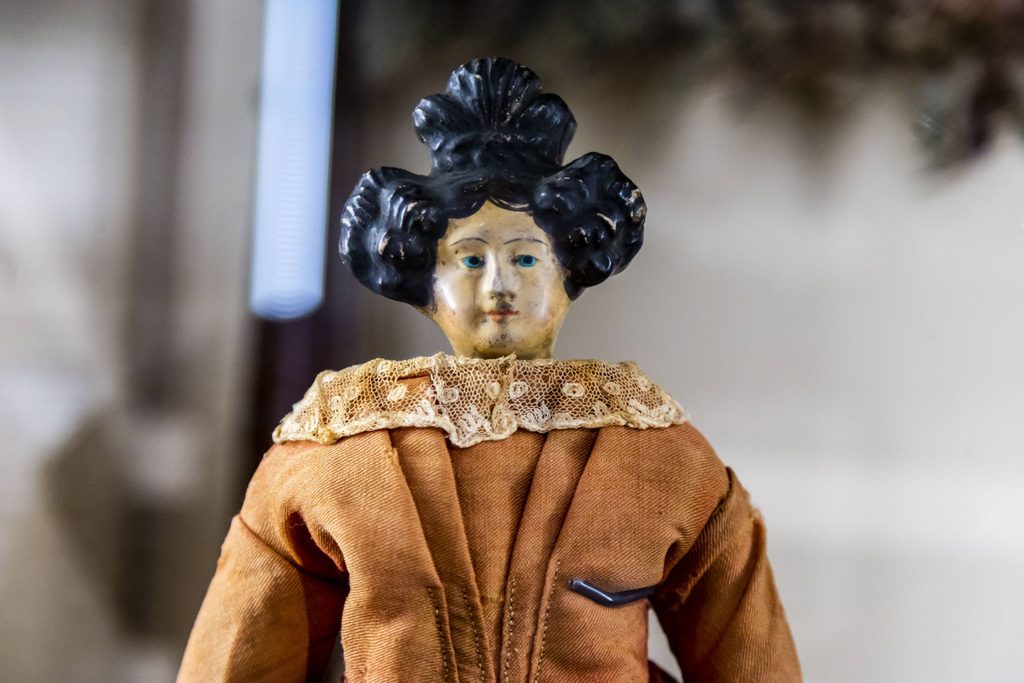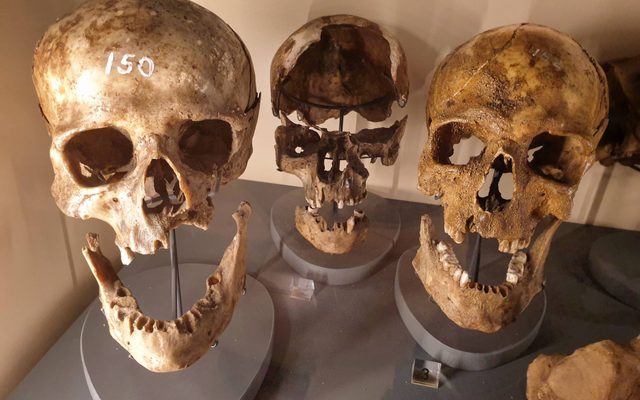A fruitful partnership between Craven Museum at Skipton Town Hall, and the Yorkshire Archaeological & Historical Society has succeeded in adding new knowledge to the prehistory of the Yorkshire Dales.
The society’s Dates in Drawers project paid for the scientific dating of a skull from one of three bodies excavated in 1889 and in the care of Craven Museum, from Elbolton Cave, near Grassington. In 1973 the burials were estimated to be Early Bronze Age but a more recent assessment in 2013 speculated that they might be of Early Neolithic date.
The result, which puts the skull as dating from 3947 to 3764 BC, clarifies the date of all three of the near-complete crouched burials. Carefully interred in crude stone cists within the cave, they show possible evidence of ‘excarnation’: the bodies had been allowed to be partly eaten by wolves or foxes before burial.
The new date firmly establishes the burials as Early Neolithic — long before the earliest earthworks at Stonehenge, for example. This is of particular interest due to the evidence for early ritual treatment, and adds greater certainty to our knowledge about the early prehistoric use of Elbolton Cave, and to the archaeology of Yorkshire caves generally.
Craven Museum Lead Jenny Hill said “It has been fantastic to have the opportunity to gain scientific evidence that firmly places the Elbolton Cave finds in the Neolithic period. This knowledge is very important for the history of Craven and the wider Yorkshire area. Working with the Yorkshire Archaeological and Historical Society on this project has been very rewarding and I hope similar projects continue across the region”,
The Yorkshire Archaeological & Historical Society President, David Asquith, was delighted with the result. “I think this shows what local initiative and targeted support can do,” he said. “Thanks to Jenny’s enthusiasm the society is building a great partnership with Craven Museum and we look forward to similar productive projects with other Yorkshire museums.”
The skulls are on permanent display at Craven Museum Museum alongside other items discovered in the cave. Entry is free.


The scientific dating was carried out by the Radiocarbon Laboratory at SUERC (Scottish Universities Environmental Research Centre) in Glasgow. The process measures the amount of ‘Carbon-14’ (14C) in a sample, from which its age can be estimated.
Two skulls were submitted but they had been heavily coated in wax in the past, to preserve them. Although the wax could not be removed, it proved possible to remove a tooth and test the unexposed root. The single viable tooth sample produced a radiocarbon determination in the range 3947–3764 cal BC (95% prob.). This is one of just a handful of radiocarbon dates of this period from Yorkshire cave contexts that have been derived from ‘whole bodies’, rather than disarticulated human and animal remains.
Elbolton Cave was excavated by the Rev. E. Jones of Embsay between 1888-91, and then again in 1920 by Dr. A. Raistrick and Mary Kitson-Clark. Neolithic and Bronze Age finds included animal and human bones, at least 11 inhumation burials and one cremation burial, three more crouched burials, a hearth and pottery.
Yorkshire Archaeological & Historical Society was founded in 1863. Members share a passion for Yorkshire’s past and a commitment to the Society’s aims, and, as volunteers, their commitment drives all our activities forward. We publish the Yorkshire Archaeological Journal, a members’ magazine Briefing, and academic monographs. Special interest sections of the Society organise lectures, excursions and projects and issue their own newsletters. Our financial grants support research within the county and our collections include important historical documents.
One of the purposes of founding the Craven Museum in 1928 was to house the finds from the Elbolton Cave excavations, together with the Craven Herbarium and other items.
You may also like…

Collection Stories
from Craven Museum
We care for a treasure trove of around 60,000 objects representing millions of years of Craven history. Delve deeper into the collection and find out fascinating facts about objects from the displays and special items from the museum stores.



